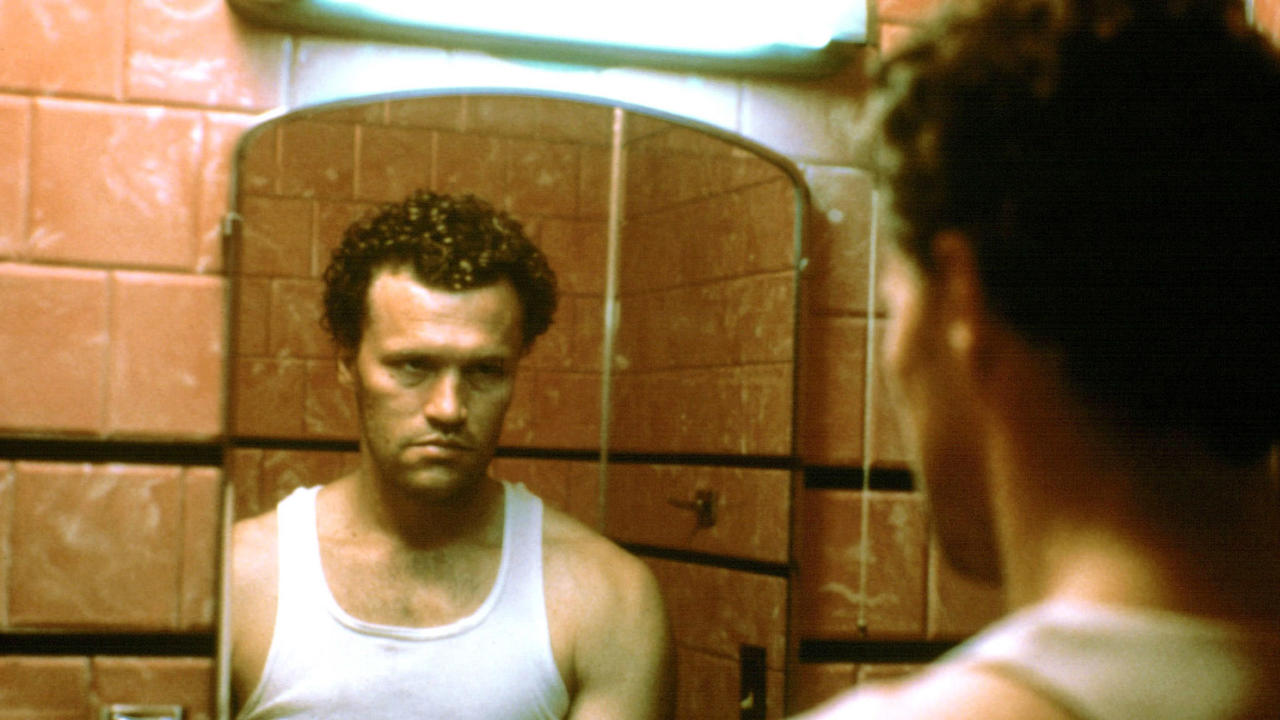
The crime film is probably the most popular type of film genre, yet may not actually be considered a genre at all. It is an element that is contained in many other film genre and subgenres; such as gangster films, film noir, prison films, caper films, westerns, lawyer films, police films, comedy, slapstick, and so many more.
It can pretty much be an important part of any type of genre. It has a long history that started out with the silent era and Sherlock Holmes films and has changed and evolved in many ways since then.
The popularity in crime films is because it provides us as the viewer with two desires; “the desire to enter a criminal world most of them would take pains to avoid in real life, and the desire to walk away from that world with none of its traumatic or fatal consequences” [1].
It is the window into a world of criminals, convicts, police, lawyers, avengers, murders, rape, violence, and victims that we are both universally afraid to visit in the real world and yet we are so strongly attracted to this world. That is the reason why crime is popular in movies, television, and literature.
In each of these mediums, crime is popular in both fiction and non-fiction. CSI and other similar television programs are some of the most popular fictional shows on television, while televised trials and documentary crime series are popular forms of true crime. Just like television, there are movies about crime and the documentary films devoted to true crime accounts.
Literature has the same thing, with pulp novels versus true crime stories. How many films, documentaries, and books have been done on just Charles Manson and the Tate-LoBianco Murders? That is just one incident that shows our obsession with this criminal world.
Several things have to be featured in order for a film to be considered a crime film. First, there has to be some sort of crime; it can vary on the type of crime committed, how the filmmakers present it, and how the characters react to the situations around them [1]. There are varying arguments between film critics about the other element that actually defines a crime film.
Some believe that the criminal has to be the central character or group of characters involved in the plot in order for it to be considered a crime film [1]. Other critics believe in a “triangular model of crime films, in which the films are distinguished by their emphasis on one of three parties involved in every crime: the victim, the criminal, and the avenging detective” [1].
This list contains a little bit of everything, with at least one film from every decade between 1940 and 1990. Some of the more popular cult films have been intentionally left out in order to focus on other ones that maybe somewhat more obscure, so that is why there is no Reservoir Dogs, the Big Lebowski, Blue Velvet, Taxi Driver, and so many others.
This list is a varied collection of cult films and trashy pictures; all ranging between being critically hailed, being exploitative and controversial, and being considered so bad that they are great.
Author’s Note: This list is not meant to be an all inclusive list or a best of list; it is simply twenty five cult movies that may be worth your time.
1. Monsieur Verdoux (1947)
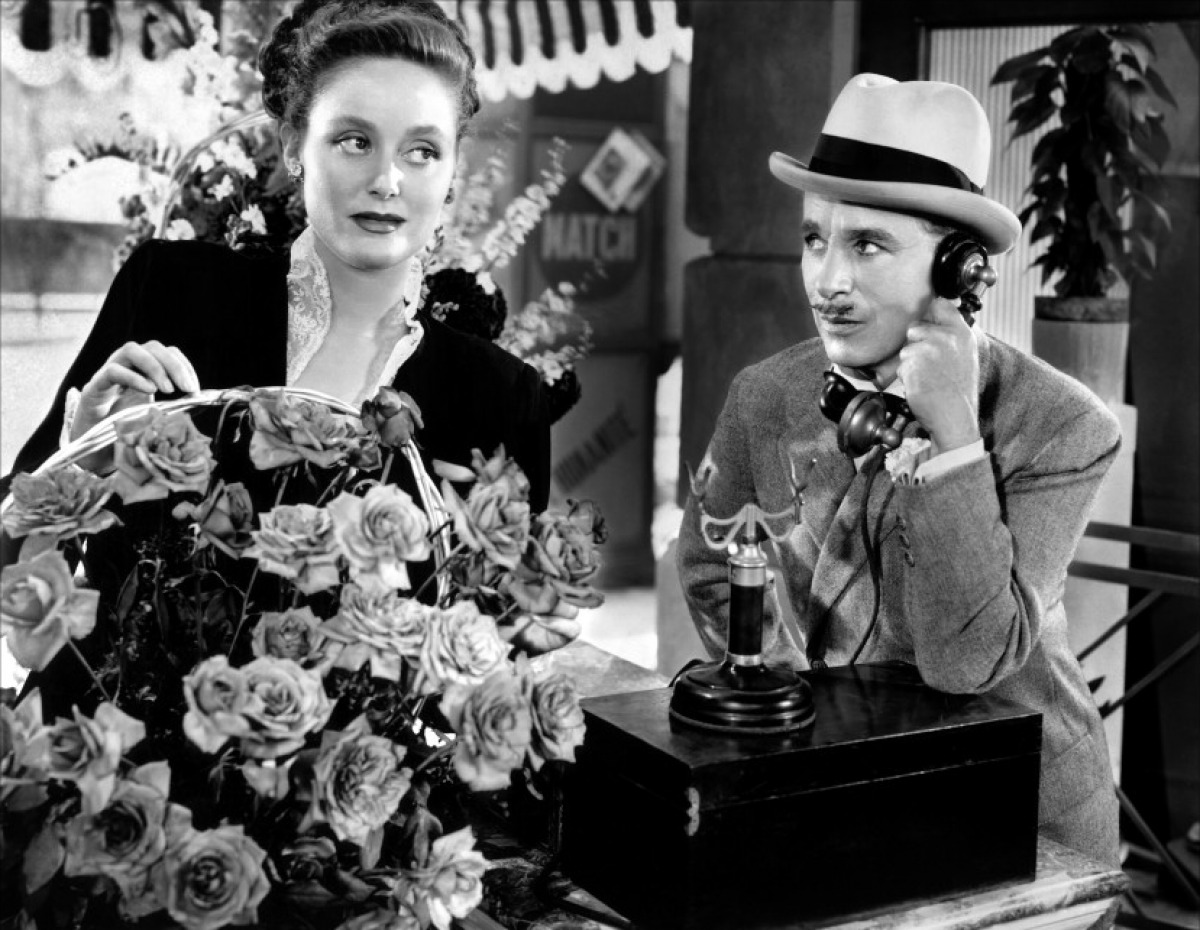
“A Comedy of Murders” [2]. Turning away from the Tramp gimmick, Chaplin takes on a slightly darker character in this dark comedy. He plays Henri Verdoux, who has been laid off from his long time job as a bank teller. In order to support his family, he begins to marry and then murder wealthy widows.
The idea for the story originated with Orson Welles, who had wanted to cast and direct Chaplin as the character who had been inspired by a real life murderer [3]. Chaplin wanted to direct his own film and ended up purchasing the script from Welles [3].
This was the first time that his character didn’t resemble the Tramp character at all. His last film The Great Dictator characters still resembled the Tramp, even if both of them actually weren’t. This was also the point at which many people feel that his films were not as good, focusing more on dialogue and less on physical comedy and pantomime.
The script is excellent, there are great performances from the supporting actors, and Chaplin is great as he drops the Tramp gimmick for good. The film’s reception was damaged at the time because of Chaplin’s personal and political controversies, along with him not playing the Tramp character anymore. Despite this poor reception, the film was nominated for an Academy Award for Best Original Screenplay.
2. Jail Bait (1954)
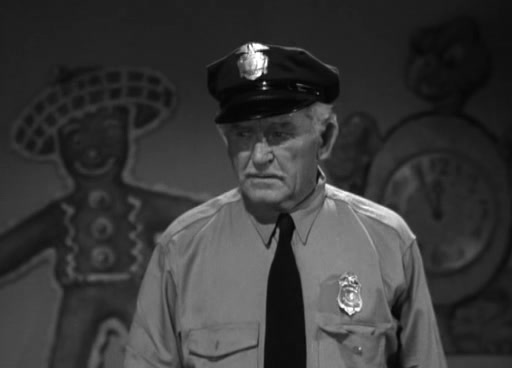
“Stay Away From Them… They’re Jail Bait!” [4]. The jail bait in this instance is the unruly son of a plastic surgeon and his dealings with his partner, who has plans to rob a payroll.
The robbery goes bad, with the night watchman and a female worker being shot. The woman survives and is able to identify them. The son wants to turn himself in but his partner kills him and goes to the father and threatens him to change his face, or he’ll never see his son again. The doctor changes his face, but makes him look like his son and the police shoot him.
This is classic Ed Wood and his attempt at doing film noir; bad lighting, wooden acting, and some goofy dialogue. The film is notable for two things; it’s one of Steve Reeves early performances, and the Cotton Watts blackface nightclub performance. Steve Reeves was a bodybuilder who became famous for portraying Hercules and also starring in other sword and sandals films.
The other item was Cotton Watts performance in blackface during a nightclub scene in the film. Watts was one of the last notable blackface performers and is in an extended scene involving comedic scenes and a dancing sequence. These scenes were not filmed by Wood and were meant for Deep South audiences, other prints have a topless female cabaret performance [5].
3. The Night of the Hunter (1955)
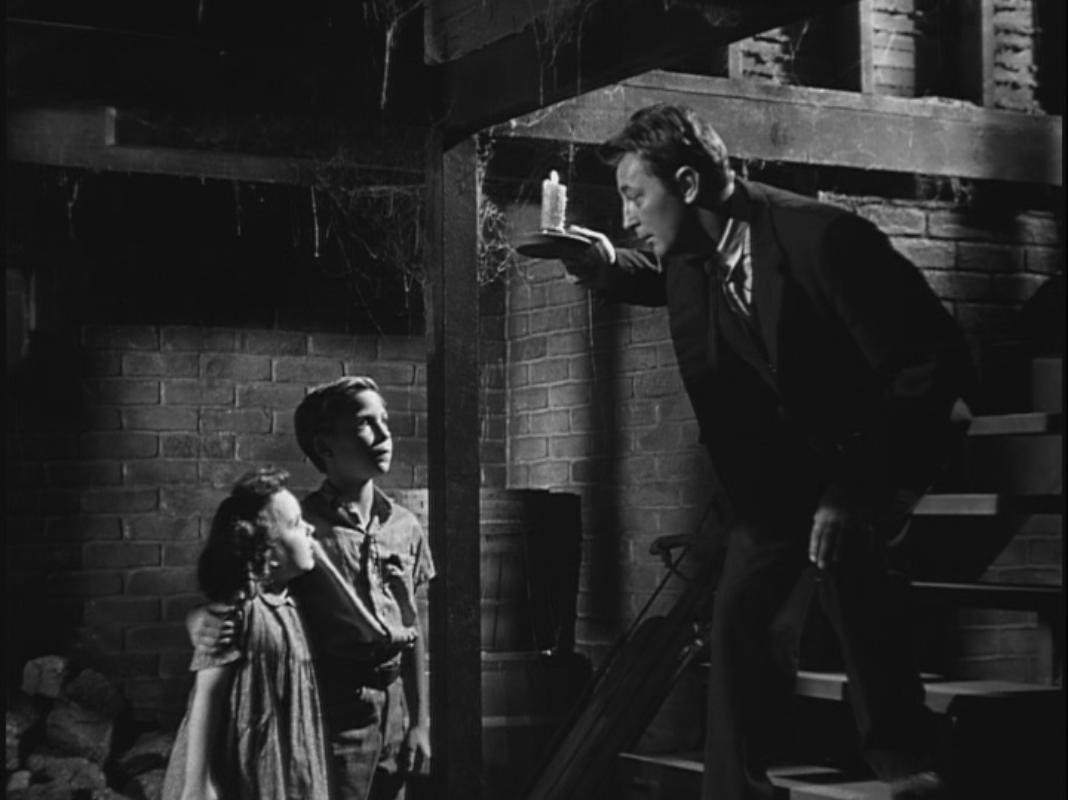
“The Hands of ROBERT MITCHUM in “The Night of the Hunter” [6]. Based upon a 1953 novel written by Davis Grubb, Ben Harper (Peter Graves) kills two people during a robbery and hides $10,000. Self professed preacher, con man, and murderer, Harry Powell learns about the money while being a prison roommate of Harper. Harper is executed and Powell heads to that town to marry Harper’s wife and find the money.
Considered by many to be not only one the best film noirs ever made, but also one of the greatest films ever made. It features an excellent cast, direction, editing, a stark black and white cinematography, score, and one the most evil villains ever on screen. Mitchum’s performance as Powell is beyond villainous and scary, with his knuckle tattoos of love and hate and is preaching.
For some reason, it did not do well on its initial release and lacked good critical reception. Years later, Roger Ebert said that “It is one of the most frightening of movies, with one of the most unforgettable of villains, and on both of those scores it holds up … well after four decades” [7]. It is listed on pretty much every list you can find ranking the top films of all time.
4. High School Confidential (1958)
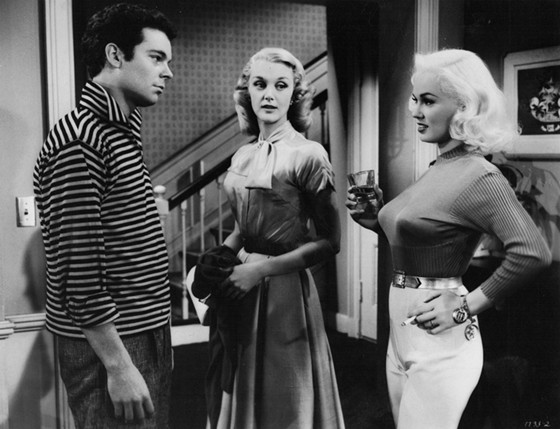
“Behind these “nice” school walls… A TEACHERS’ NIGHTMARE!…A TEEN-AGE JUNGLE!” [8]. This movie is where it’s at, can you dig man? I don’t know if that’s even proper 1950’s slang, but any movie that opens with Jerry Lee Lewis singing “High School Confidential” from the back of a pickup truck is automatically cool.
A wise cracking teen shows up at his new school with plans to muscle in on the drug trade and takeover, looking to score some major drugs with some major cash. He gets hooked up with the current teens running drugs in the school and ends up involved in car racing, hidden drugs, the police, and the local drug kingpin. In the end, we discover that he is actually an undercover cop trying to conquer the drug problems in the countries high schools.
The movie comes off like Reefer Madness meets 21 Jump Street and tries to serve as a morality tale that smoking weed leads to using heroin. The film is notable for its cast and director, which includes Russ Tamblyn (West Side Story), Jon Sterling, Jackie Coogan (Uncle Fester), Michael Landon (Bonanza), Mamie Van Doran, John Drew Barrymore, and director Jack Arnold.
Arnold had become known for his sci-fi films such as Creature from the Black Lagoon, Tarantula and the Incredible Shrinking Man. He was highly respected and this film definitely delivers; it has a moody black and white cinematography, good solid acting from its crew, great dialogue with 1950’s hipster slang, good pacing, great shadows and scene blocking, an memorable opening song, and a beatnik poetry reading in the middle.
5. The Naked Kiss (1964)
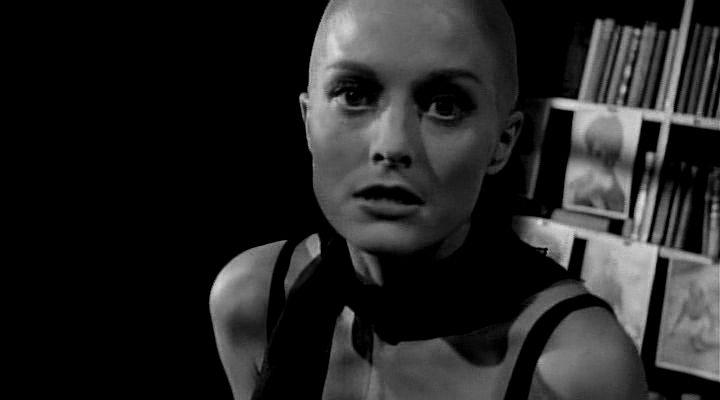
“Candy’s Place–where all kinds of men find all kinds of sweets!” [9]. A prostitute tries to change here ways and becomes a nurse at a hospital for handicapped children. She falls in love with a man whose family is wealthy. Close to her wedding day, she discovers that he is actually a child molester and ends up killing him. Jailed for his murder, she must then find one of his victims to come forward to exonerate her.
This film was written, directed, and produced by Samuel Fuller, who was known for trying to display tough and lurid subject matter in a realistic tabloid style. This one is no different, shocking audiences with the tough subject matter of prostitution and molestation. Critic Jerry Renshaw said that the film “dwells on the uncomfortable and taboo subjects of deviancy, prostitution, and small-town sanctimony.
In typical Fuller style, it’s a hard look at a nightmarish world, lurid and absorbing enough to demand that the viewer watch. It’s part melodrama, part sensationalism, and part surreal, but above all it’s absolutely, positively 100% Sam Fuller, with all the nuance and subtlety of a swift kick in the butt” [10].
6. The Boston Strangler (1968)
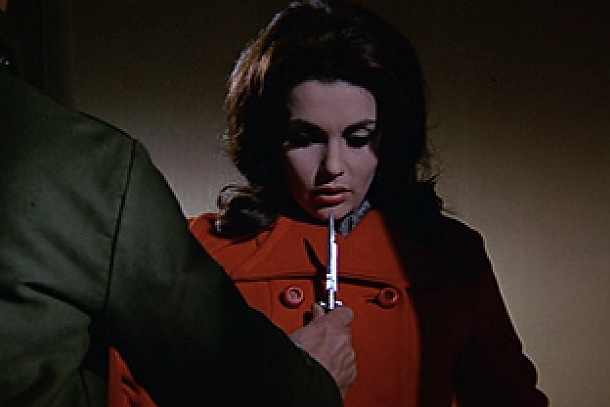
“This is the true story of Albert DeSalvo, the self-confessed Boston Strangler, and of what he did to thirteen women and one city” [11]. Well Sort of. It was based upon the book written by Gerold Frank, but the facts have been changed around to create a more dramatic movie.
The first screenplay was actually written as a comedy by Terence Rattigan, where the killer would be revealed by a computer [11]. The story involves the police hunt for the Boston Strangler (Tony Curtis), who is eventually caught and ends up giving Chief Detective John Bottomly (Henry Fonda) a confession after figuring out he has a split personality.
If you take a step away and ignore that the film is not all factually accurate, then this is a very gripping, engaging, and intense neo-noir crime thriller with unflinching details. The acting and directing are very good, with a veritable who’s who of amazing supporting character actors.
Fonda and Curtis are excellent, particularly Curtis who is out of character playing the mentally disturbed serial killer. The final fifteen minutes are absolutely brilliant filmmaking and acting as the camera is basically on Curtis the whole time, as he is finally discovering the truth that he had been killing those women.
The rest of the cast includes George Kennedy (Cool Hand Luke), Mike Kellin (Midnight Express), Murray Hamilton (Jaws), Jeff Corey (Butch Cassidy and the Sundance Kid), Sally Kellerman (MASH), William Marshall (Blacula and the King of Cartoons), George Voskovec (12 Angry Men), William Hickey (Prizzi’s Honor), and James Brolin.
The directing was well done and has some memorable shots; including the use of squares showing multiple events taking place at the same time, this changed back to full screen once Fonda showed up around thirty minutes in, then came back with about fifty minutes left when Curtis first appears to kill the final women, and the final questioning scene was once again great and haunting with just focusing mainly on Curtis the whole time.
The film got poor reception when it came out, critic Renata Adler said that it “represents an incredible collapse of taste, judgment, decency, prose, insight, journalism and movie technique, and yet—through certain prurient options that it does not take—it is not quite the popular exploitation film that one might think.
It is as though someone had gone out to do a serious piece of reporting and come up with 4,000 clippings from a sensationalist tabloid. It has no depth, no timing, no facts of any interest and yet, without any hesitation, it uses the name and pretends to report the story of a living man, who was neither convicted nor indicted for the crimes it ascribes to him.
Tony Curtis ‘stars’—the program credits word—as what the movie takes to be the Boston strangler” [12]. I recommend that you step away from what the true facts of the events were and simply take this as a fictional account about a serial killer in a movie.
7. Pretty Poison (1968)
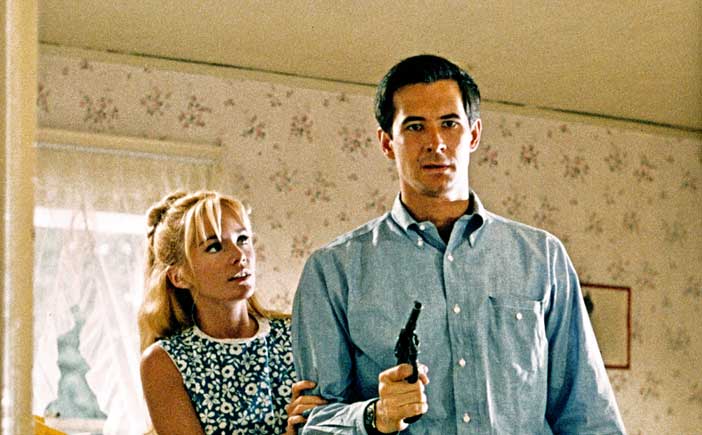
“A shook-up story of the up-tight generation” [13]. Dennis Pitt (Anthony Perkins) is a recently released mental patient who ends pretending to work for the CIA and gets involved with a teenage girl (Tuesday Weld), who takes things down into a dark and murderous place that has serious consequences for him.
Perkins is at his best in the film portraying a character that is somewhat still locked into his adolescence, as the fifteen year old that is tormented by setting fire to a house and accidently killing his aunt. The director goes into great depth to give long shots of Dennis running around town, in these moments “Dennis is unlocking himself …. and the sheer joy of physical release has made him ecstatic” [14].
Weld doesn’t reveal her devious and psychotic manipulation and sensibilities until later on in the film, where we finally discover that she is the pretty poison of the film. She is not afraid of Dennis because she doesn’t fear anything and has been searching for a patsy to eliminate her mother for some time now [14].
The excellent film reviews is what helped get this movie any notice during its release, with many calling it one of the best films of 1968. Rex Reed called it “an offbeat, original, totally irreverent examination of violence in America, refreshing in its subtlety and intelligent in its delivery” [15].
8. Honeymoon Killers (1969)
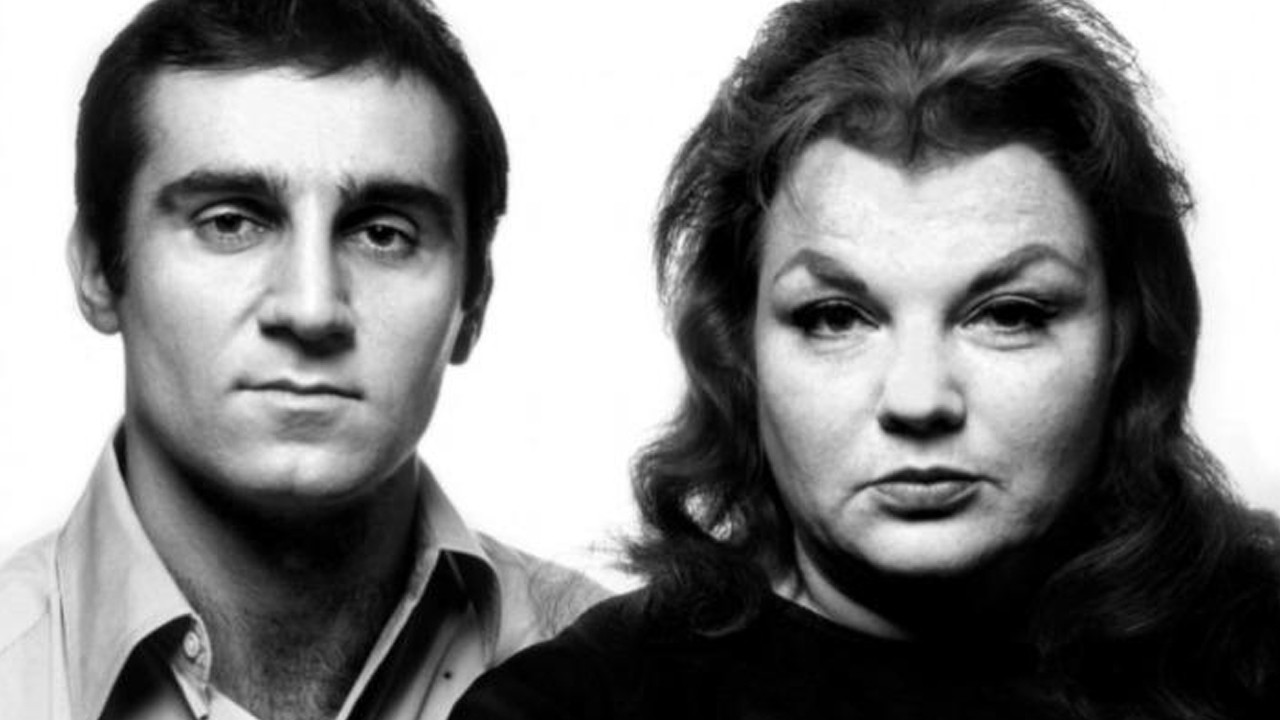
In this low budget crime thriller, a couple known as the “lonely hearts killers” of the 1940’s con lonely women out of their money using a lonely hearts column. Things turn deadly when they fear that they are going to get caught by the police, killing an elderly woman and then a mother and her child. The movie’s characters Raymond Fernandez (Tony LoBianco) and Martha Beck (Shirley Stoler) is based off of two actual murderers from the New York area who were tried and put to death in 1951.
The film is both frightening and campy, with surprisingly good footage and filmmaking for a film shot on a budget of $150,000. The film starts with the camera panning out in the hospital hallway and ends with it panning out in a prison hallway. The two murder scenes are pretty powerful, with an excellent shot staying on the woman’s eyes while they are getting ready to shoot her in the head.
Stoler plays Beck as a total bitch from the very beginning and never lets up, constantly having snappy dialogue and responses to the other women and the situation. Because of the low budget it does feel somewhat campy at times; like it could be John Water’s film if you just replaced Stoler for Divine.
The film is ranked highly among director Todd Solondz and French direct Francois Truffaat has called it his “favorite American film” [16].